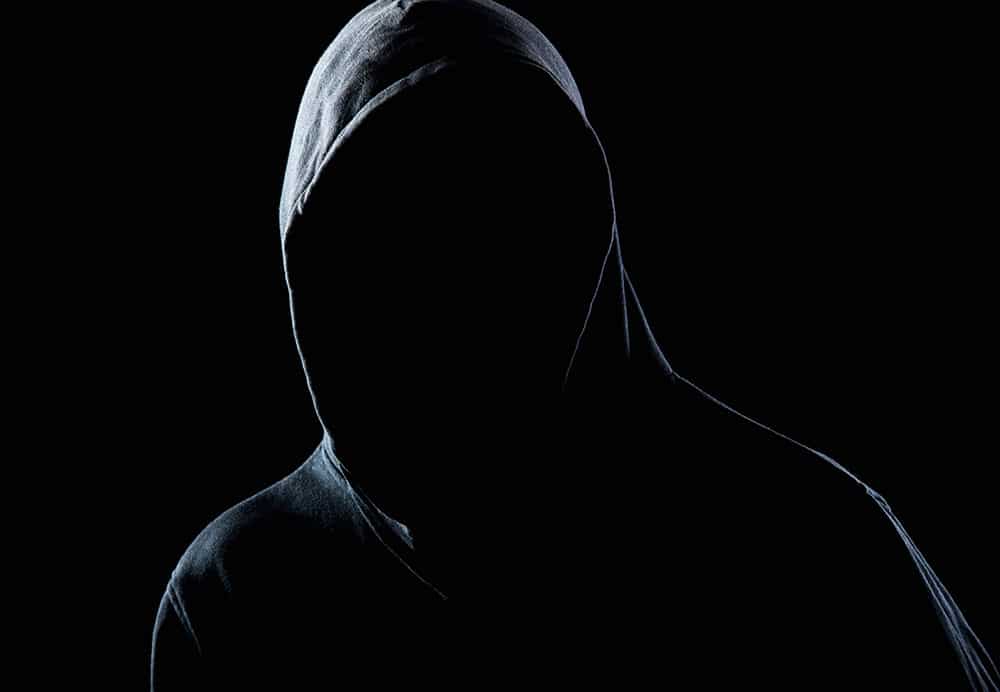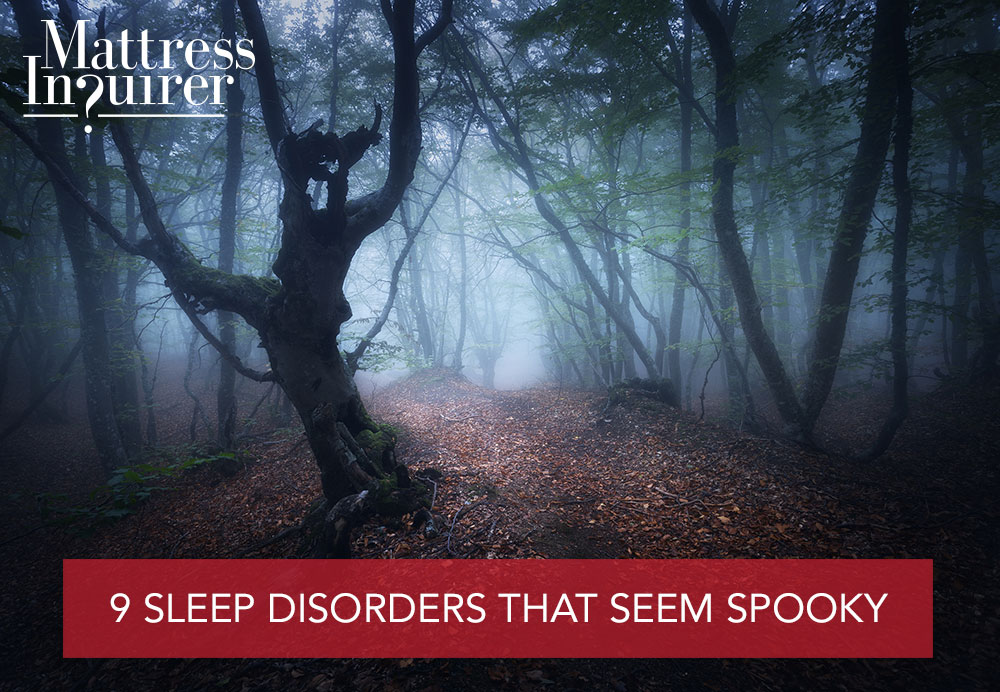A high-pitched scream breaks the silence of the night. A zombie stalks the streets as the clock strikes midnight. You wake unable to move away from shadowing figures trying to strangle you in bed. The start of the latest scary movie? Not quite.
Sometimes, real life can be stranger than fiction. Indeed, many old, frightening stories have roots in what we now recognize as medical conditions. And, some sleep disorders seem like scenes right out of a horror movie, spooky nighttime happenings that seem down right scary.
Just in time for Halloween, take a look at nine Spooky Sleep Disorders and what kind of trouble they can stir up at night.
Sleep Walking
Sleepwalkers don’t usually wander around with their arms outstretched, as lurking zombies depicted in early horror movies. Instead, they rather walk normally, and are capable of performing tasks such as moving furniture, cooking, or driving. One might wonder if the blank stares and non-responsive nature might have induced the zombie myth though.
There are plenty of strange sleepwalking stories that have made headlines over the years:
- A wife found her husband outside, naked and mowing the lawn.
- A 15-year old girl in England sleepwalked up a 130-foot crane – when fire crews climbed up, she was still asleep.
- A Canadian man drove 10 kilometers to murder his in-laws while he was asleep, and had no recollection of doing so.
About 15% of adults, and a slightly higher percentage of children experience occasional sleep walking. This disorder can bring real-life danger though: 19% of sleepwalkers have been hurt during their nightly adventures, most commonly from falling. However, the reasons for sleepwalking aren’t clear to researchers. It seems to potentially tie in with stress and not sleeping enough.
Nightmare Disorder

Most people experience a few bad dreams in their lifetime, but when the occasional fright becomes a near-nightly terror it may a sign of Nightmare Disorder. These intense nightmares range from physical threats, such as being pursued, or a psychological one such as being teased. They often include monsters, ghosts, ferocious animals, bullies, or other bad people.
Sufferers from Nightmare Disorder may dread going to sleep. Stress (including PTSD), sleep deprivation, genetic predisposition, and some medications may trigger the nightmares, which happen during REM sleep. When awoken, the person will usually be alert, responsive and receptive to calming. Long term treatment for nightmare disorder may include counseling or sedative drugs.
Night Terrors
Screaming, thrashing, frantic pacing, sitting upright in bed with blank staring eyes. Sounds like a scene out of a scary movie, but for some sleepers, night terrors are the real deal. Most common in small children, night terrors happen early in the night during non-REM sleep.
The sleeper seems hard to wake or comfort, but usually settles back to sleep after 10-15 minutes. Typically, they don’t remember anything in the morning, although they certainly may give housemates or parents a lasting fright. Night terrors can be triggered by fever, irregular sleep, or stress, and usually fade with age.
Sleepy Hallucinations
Ever drift off to slumber only to wake and see spiders crawling up the wall or shadows sulking around the room? Mythology might have you believe someone – or something – is playing tricks on you.
Sleep hallucinations – hearing voices, feeling phantom sensations, seeing people and strange objects in their room, seeing bugs crawling on the walls – can occur in a state between sleeping and waking. The sleepy hallucinations can be visual, auditory, tactile, or olfactory.
These mental anomalies are most commonly associated with stress, poor sleep or narcolepsy. If you suffer from sleepy hallucinations, try relaxation techniques and stay out of bed until you are really tired. If you aren’t sleeping well and doze off during the day, make an appointment to see your doctor. It could be a sign of an untreated sleep disorder or an issue like sleep apnea.
Sleeping Beauty Syndrome
Imagine sleeping for 23 hours per day for weeks at a time, then suddenly waking and functioning normally. That is, until the next episode six months to a year down the road. For those that have Kleine-Levin Syndrome, or Sleeping Beauty Syndrome, this is reality.
KLS is a rare neurological disorder linked to excessive amounts of sleep, spacy behaviors and confusion. The syndrome comes in waves lasting for days, weeks or months, and lasts about eight years with periods of normalcy between bouts of various lengths. 70% of those affected are teenage boys around the age of 15.
Researchers believe KLS may involve the malfunctioning of the hypothalamus, which helps regulate sleep and body temperature. It is precipitated most frequently by infections or head trauma.
Exploding Head Syndrome
During the onset of deep sleep, you all of the sudden hear an explosion, gunshot, or crashing of cymbals. The sharp, loud noise seems to originate from inside your head, or right beside your ear but you know it’s not real.
Besides fear, confusion, distress, and a scary sounding name, Exploding Head Syndrome doesn’t cause pain or danger, and isn’t related to any serious illness. Exploding Head Syndrome affects around 10% of the population and is most common with women over 50.
Doctors don’t know what causes it, but there is some speculation that it may be stress, anxiety, impairments in calcium signaling, sudden shifts of the middle ear component, minor temporal lobe seizures, or brain stem neuronal dysfunction. Improved sleep hygiene, relaxation, counseling, tricyclic antidepressants, or calcium channel blockers may help improve Exploding Head Syndrome.
Sleep Eating

Imagine, you work out hard and exercise self-control all day, while your own brain sabotages your efforts during the night. Some even wake to find the remnants of four course cooking endeavor and other not-so-safe activities for sleepers.
Nocturnal Eating Disorder involves going on eating binges during the night with little or no memory of the event. This might include chopping and preparing food, turning on the stove, or eating raw food straight from the fridge.
It occurs during non-REM sleep, but researchers don’t entirely understand the reasons for sleep eating yet. Sufferers sometimes take prescribed drugs that increase Dopamine, a neurotransmitter associated with reward and pleasure, to help stop the late night, unavoidable snacking. Research links factors like stress, sleep deprivation, some medications and even quitting smoking or drinking with this behavior.
Sleep Paralysis
Imagine this: you open your eyes to find a figure in the room, standing over your bed. They sulk closer, attempting to touch you. You try to scream and jump out of bed but you can’t move. It’s like you are paralyzed. If you’ve ever had the displeasure of experiencing something like this, you’ve encountered Sleep Paralysis.
In Newfoundland folklore, this presence earns the name ‘Old Hag’, while in China it translates to ‘Ghost Pressing Down on You’ and ‘The Dead Climb on Top of You’ in Mexico. Researchers suspect that some of the tales of alien abduction may tie in to episodes of sleep paralysis.
During REM sleep, you actually are paralyzed. But, this serves a purpose. The voluntary muscles of the body become immobile to prevent you from acting out your dreams. But for about 8% of people, sometimes the paralysis lasts after the sleeper wakes up.
People who experience sleep paralysis often described it as intensely frightening. Coupled with sleepy hallucinations, people report feelings of being crushed, choked or unable to scream or move away from an ominous presence.
REM Behavior Disorder
Perhaps the opposite of Sleep Paralysis, those with REM Behavior Disorder exhibit violent outbursts of yelling, thrashing, punching, kicking, even getting out of bed and getting violent during sleep.
it happens when the brain fails to signal the body to stay still during REM sleep. These violent outbursts can be scary for the thrashing sleeper’s bed partner and injuries are common to both the sleeper and those near them. The sleeper often remembers their dreams, but will not recall moving around.
This disorder proves most common in older adults, and treatment includes medications that reduce REM sleep and relax the body. REM Behavior Disorder may be a symptom of Parkinson’s disease, so if it becomes a regular thing, it’s worth discussing with your doc.
Share: Do you have real-life sleep stories or experience with spooky sleep disorders?
